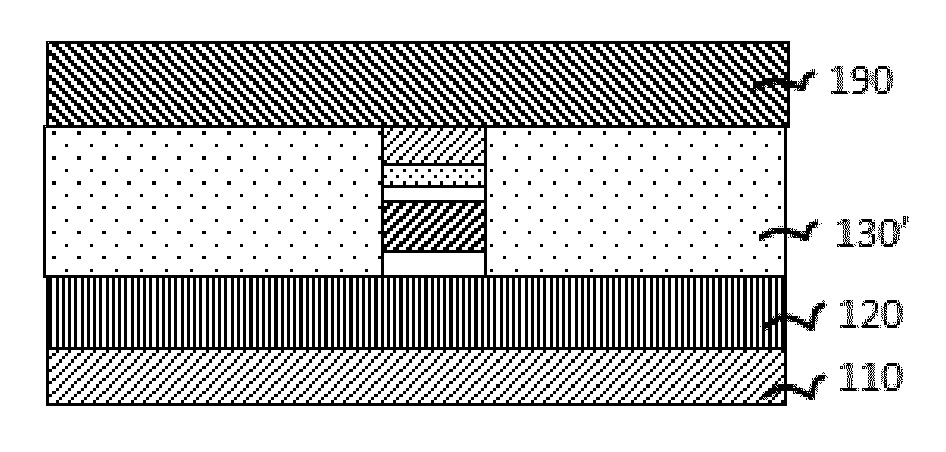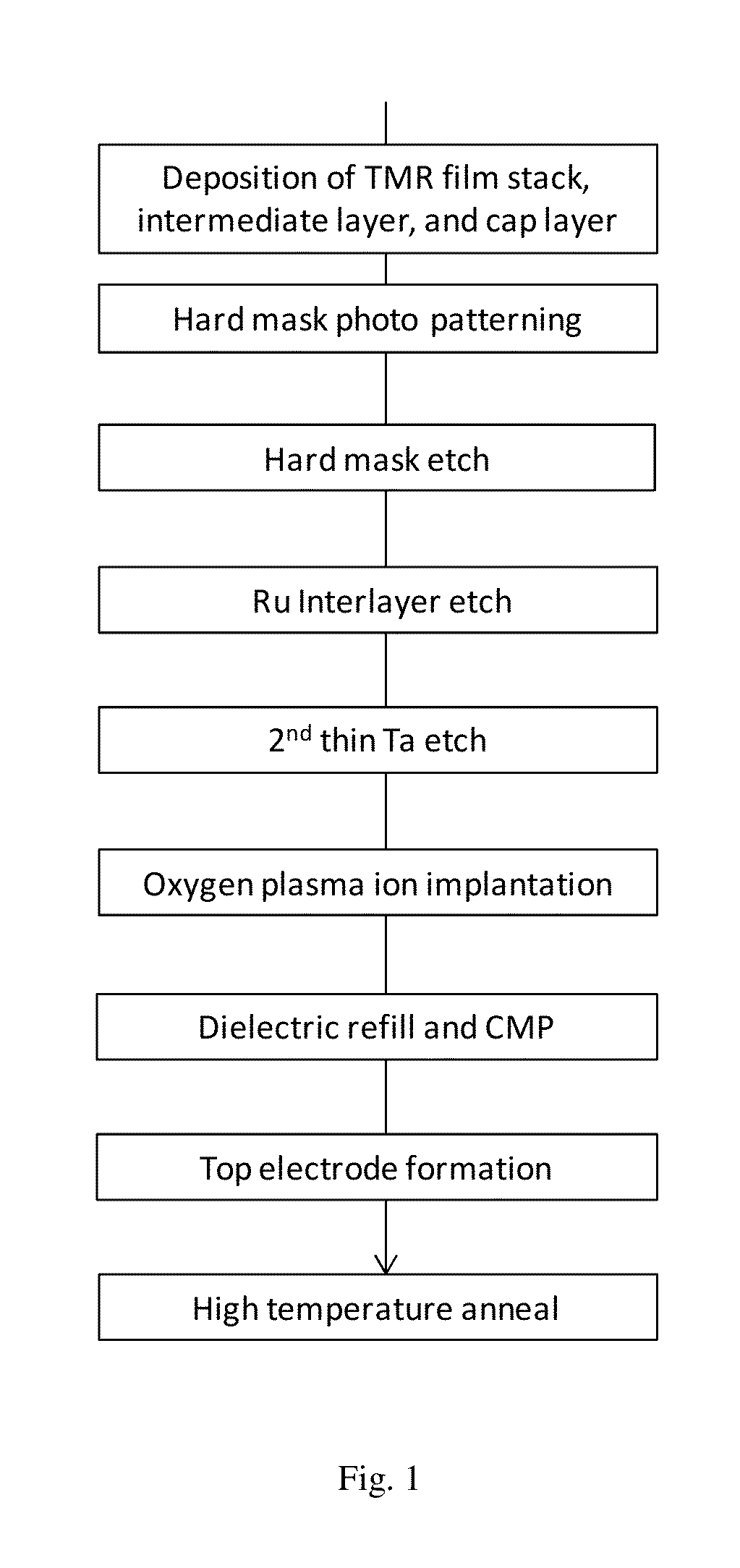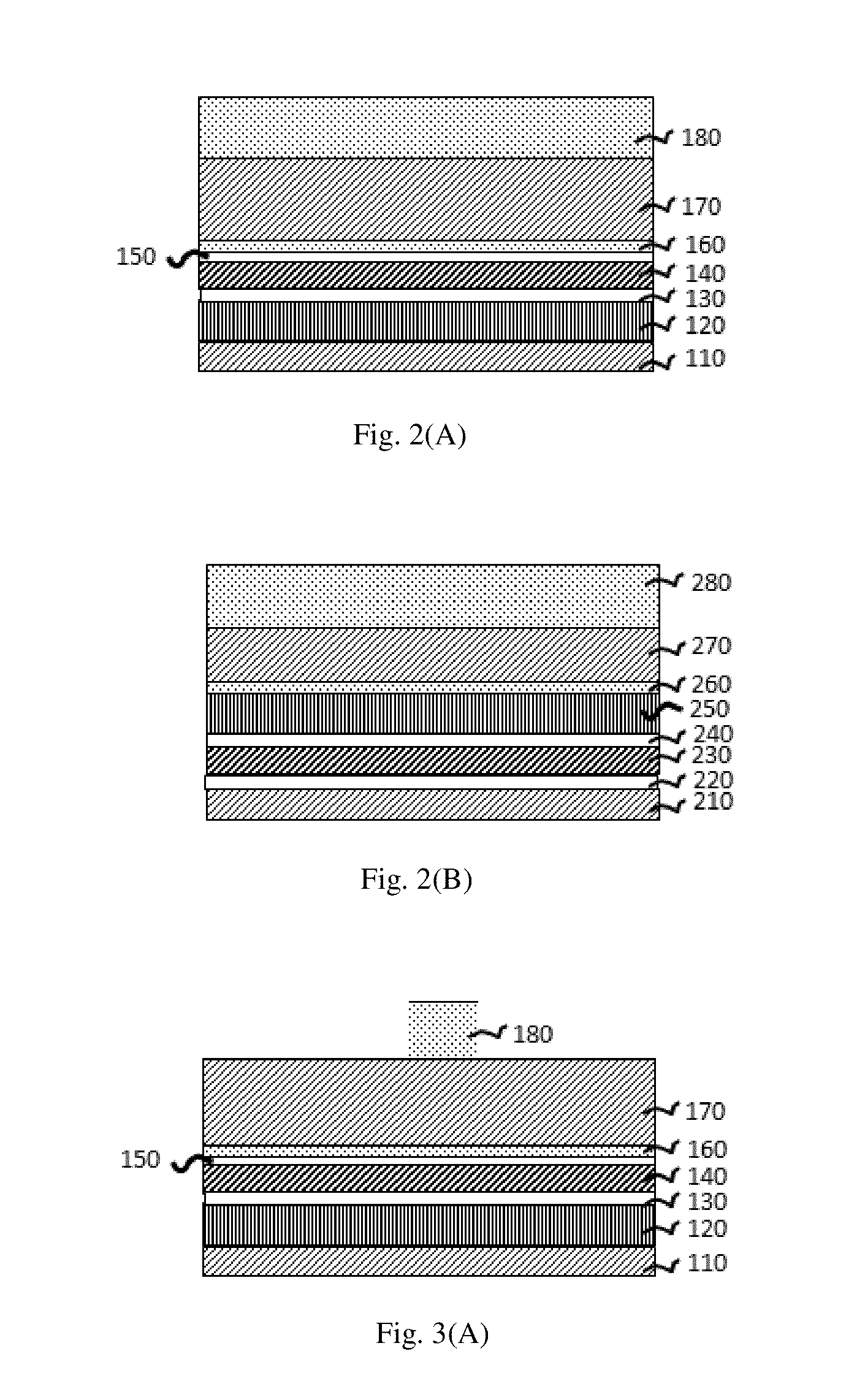Hybrid method of patterning MTJ stack
a hybrid method and stack technology, applied in the field of spinelectronic devices, can solve the problems of increasing the cost of increasing the write current, reducing the write current, and not having enough magnetic crystalline anisotropy to achieve thermally stable perpendicular magnetization, etc., to achieve the effect of increasing the resistance and increasing the resistan
- Summary
- Abstract
- Description
- Claims
- Application Information
AI Technical Summary
Benefits of technology
Problems solved by technology
Method used
Image
Examples
Embodiment Construction
[0039]In general, according to each embodiment, there is provided a magnetoresistive element, formed on a substrate, comprising:[0040]a recording layer having magnetic anisotropy in a film surface and having a variable magnetization direction;[0041]a reference layer having magnetic anisotropy in a film surface and having an invariable magnetization direction;[0042]a tunnel barrier layer provided between the recording layer and the reference layer;[0043]an MgO intermediate layer provided on a top surface of above MTJ stack;[0044]a protective cap layer provided on top surface of above intermediate layer.
[0045]The following detailed descriptions are merely illustrative in nature and are not intended to limit the embodiments of the subject matter or the application and uses of such embodiments. Any implementation described herein as exemplary is not necessarily to be construed as preferred or advantageous over other implementations. Furthermore, there is no intention to be bound by any ...
PUM
 Login to View More
Login to View More Abstract
Description
Claims
Application Information
 Login to View More
Login to View More - R&D
- Intellectual Property
- Life Sciences
- Materials
- Tech Scout
- Unparalleled Data Quality
- Higher Quality Content
- 60% Fewer Hallucinations
Browse by: Latest US Patents, China's latest patents, Technical Efficacy Thesaurus, Application Domain, Technology Topic, Popular Technical Reports.
© 2025 PatSnap. All rights reserved.Legal|Privacy policy|Modern Slavery Act Transparency Statement|Sitemap|About US| Contact US: help@patsnap.com



